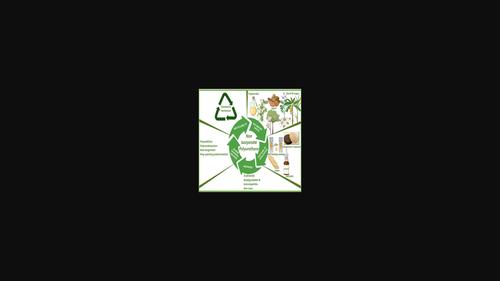当前位置:
X-MOL 学术
›
Biopolymers
›
论文详情
Our official English website, www.x-mol.net, welcomes your feedback! (Note: you will need to create a separate account there.)
Innovations in applications and prospects of non-isocyanate polyurethane bioplastics
Biopolymers ( IF 2.9 ) Pub Date : 2023-10-17 , DOI: 10.1002/bip.23568 Mangal Mangal 1 , Supriya H 2 , Suryasarathi Bose 2 , Tamal Banerjee 1
Biopolymers ( IF 2.9 ) Pub Date : 2023-10-17 , DOI: 10.1002/bip.23568 Mangal Mangal 1 , Supriya H 2 , Suryasarathi Bose 2 , Tamal Banerjee 1
Affiliation

|
Currently, conventional plastics are necessary for a variety of aspects of modern daily life, including applications in the fields of healthcare, technology, and construction. However, they could also contain potentially hazardous compounds like isocyanates, whose degradation has a negative impact on both the environment and human health. Therefore, researchers are exploring alternatives to plastic which is sustainable and environmentally friendly without compromising its mechanical and physical features. This review study highlights the production of highly eco-friendly bioplastic as an efficient alternative to non-biodegradable conventional plastic. Bioplastics are produced from various renewable biomass sources such as plant debris, fatty acids, and oils. Poly-addition of di-isocyanates and polyols is a technique employed over decades to produce polyurethanes (PUs) bioplastics from renewable biomass feedstock. The toxicity of isocyanates is a major concern with the above-mentioned approach. Novel green synthetic approaches for polyurethanes without using isocyanates have been attracting greater interest in recent years to overcome the toxicity of isocyanate-containing raw materials. The polyaddition of cyclic carbonates (CCs) and polyfunctional amines appears to be the most promising method to obtain non-isocyanate polyurethanes (NIPUs). This method results in the creation of polymeric materials with distinctive and adaptable features with the elimination of harmful compounds. Consequently, non-isocyanate polyurethanes represent a new class of green polymeric materials. In this review study, we have discussed the possibility of creating novel NIPUs from renewable feedstocks in the context of the growing demand for efficient and ecologically friendly plastic products.
中文翻译:

非异氰酸酯聚氨酯生物塑料的应用创新及前景
目前,传统塑料在现代日常生活的各个方面都是必需的,包括医疗保健、技术和建筑领域的应用。然而,它们也可能含有异氰酸酯等潜在危险化合物,其降解会对环境和人类健康产生负面影响。因此,研究人员正在探索可持续且环保且不损害其机械和物理特性的塑料替代品。这项综述研究强调了高度环保的生物塑料的生产作为不可生物降解的传统塑料的有效替代品。生物塑料由各种可再生生物质来源生产,例如植物碎片、脂肪酸和油。二异氰酸酯和多元醇的加聚是几十年来采用的一种技术,用于从可再生生物质原料生产聚氨酯 (PU) 生物塑料。异氰酸酯的毒性是上述方法的一个主要问题。近年来,为了克服含异氰酸酯原料的毒性,不使用异氰酸酯的新型绿色聚氨酯合成方法引起了越来越多的兴趣。环状碳酸酯(CC)和多官能胺的加聚似乎是获得非异氰酸酯聚氨酯(NIPU)最有前途的方法。这种方法可以创造出具有独特和适应性强的聚合物材料,并消除有害化合物。因此,非异氰酸酯聚氨酯代表了一类新型的绿色聚合物材料。在这项综述研究中,我们讨论了在对高效和生态友好的塑料产品的需求不断增长的背景下,用可再生原料制造新型 NIPU 的可能性。
更新日期:2023-10-17
中文翻译:

非异氰酸酯聚氨酯生物塑料的应用创新及前景
目前,传统塑料在现代日常生活的各个方面都是必需的,包括医疗保健、技术和建筑领域的应用。然而,它们也可能含有异氰酸酯等潜在危险化合物,其降解会对环境和人类健康产生负面影响。因此,研究人员正在探索可持续且环保且不损害其机械和物理特性的塑料替代品。这项综述研究强调了高度环保的生物塑料的生产作为不可生物降解的传统塑料的有效替代品。生物塑料由各种可再生生物质来源生产,例如植物碎片、脂肪酸和油。二异氰酸酯和多元醇的加聚是几十年来采用的一种技术,用于从可再生生物质原料生产聚氨酯 (PU) 生物塑料。异氰酸酯的毒性是上述方法的一个主要问题。近年来,为了克服含异氰酸酯原料的毒性,不使用异氰酸酯的新型绿色聚氨酯合成方法引起了越来越多的兴趣。环状碳酸酯(CC)和多官能胺的加聚似乎是获得非异氰酸酯聚氨酯(NIPU)最有前途的方法。这种方法可以创造出具有独特和适应性强的聚合物材料,并消除有害化合物。因此,非异氰酸酯聚氨酯代表了一类新型的绿色聚合物材料。在这项综述研究中,我们讨论了在对高效和生态友好的塑料产品的需求不断增长的背景下,用可再生原料制造新型 NIPU 的可能性。



























 京公网安备 11010802027423号
京公网安备 11010802027423号